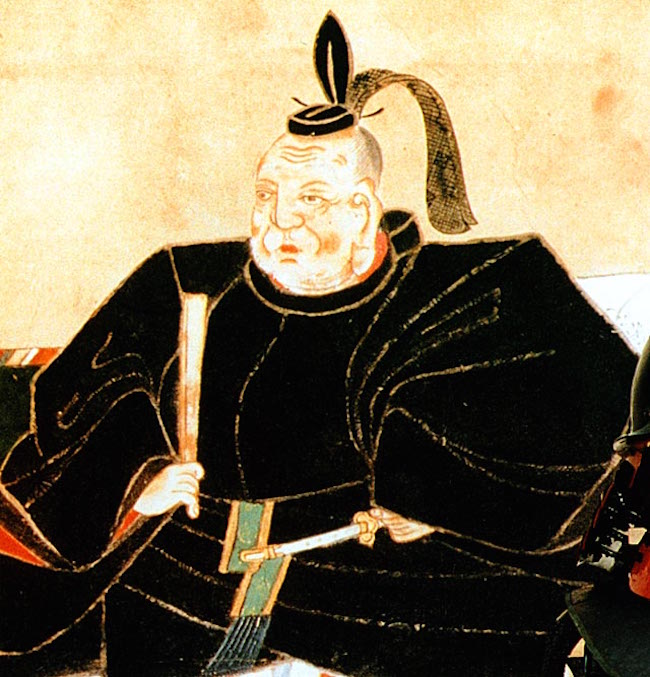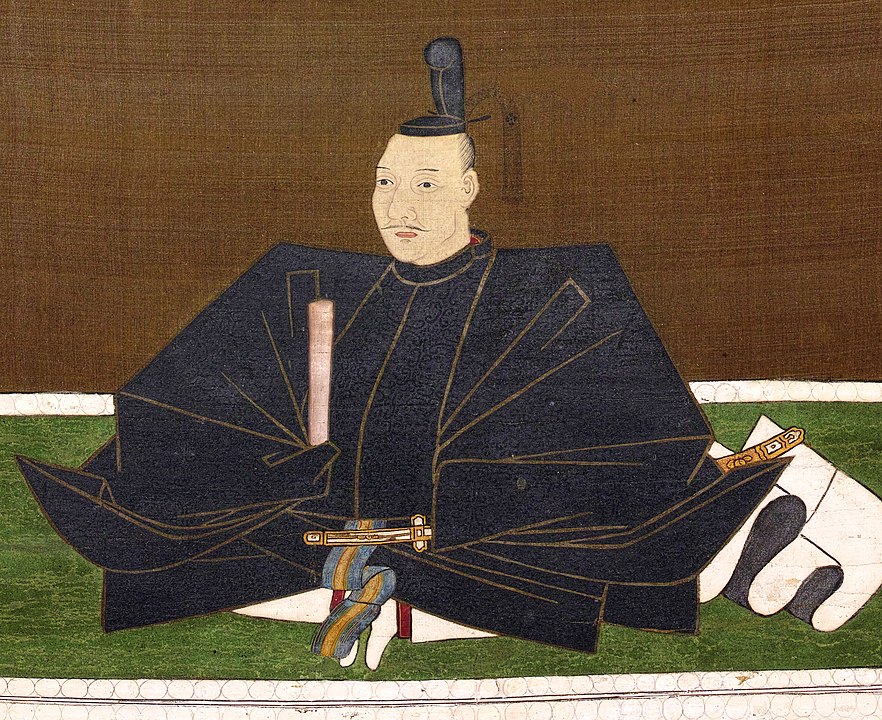Feb 28, 2024
From Fool to Demon to Death – A potted history of Oda Nobunaga, Nagoya’s Warrior Ruler
While many of us have worked for managers or employers whom we felt were a couple of chopsticks short of a bento box, it is doubtful that your mortality was in their hands. However, for the samurai of Owari Province (latter-day Aichi) in the late 16th century, it must have been somewhat disconcerting to know that your all-powerful warlord, Oda Nobunaga, was known locally as The Fool of Owari. Yet, when this fool grew up, he was to become one of the most powerful men Japan had ever known.
To be a samurai nepo baby
In the early 16th century, the Owari Domain was ruled by the powerful Oda Clan, at the head of which sat Oda Nobuhide (1510-1551). As a shugo, a military governor appointed by the shogun, Nobuhide, also known as The Tiger of Owari, held enormous power, a power that was set to be handed down to his one legitimate son, Oda Nobunaga (1534-1582).

Statue of Oda Nobunaga at Kiyosu Castle
One may think that receiving advantages such as homes in the original Nagoya Castle and the more auspicious Kiyosu Castle, while being groomed for greatness under the guidance of some of the most respected warriors in the area, young Nobunaga would have been the epitome of an upstanding samurai. However, as well as befriending children from the peasant classes (not the done thing) and possessing a fondness for firearms (likewise) he was known for his strange and boisterous behaviour, earning him the nickname ‘Fool of Owari’.
Taking command
As such, it must have been worrying to all within Owari domain when, in 1551, Nobuhide unexpectedly passed away, leaving his unpopular son in control. As so often happened in these warring times, with The Tiger gone, others smelled blood, particularly the nearby Imagawa Clan, who laid siege to Anjo Castle. With his half brother Nobuhiro within the castle, Nobunaga sued for peace, offering up hostages as part of the deal (including a young Tokugawa Ieyasu). In further turmoil, Nobuhiro later repaid this kindness by attempting to overthrow Nobunaga, for which the Owari leader forgave him. However, when two of his loyal retainers also turned against him – something of a running theme – Nobunaga decided that there was to be no more Mr Nice Samurai.

Also from Aichi, future shogun Tokugawa Ieyasu was a young hostage for Nobunaga
The Shiga Clan, allied with Nobunaga’s uncle, were the next scavengers on the horizon, but they were repelled, after which the man once called The Fool burned the lands of his defeated foe in retaliation, before blockading his uncle’s home in Kiyosu Castle, leading to widespread famine. The Imagawa returned and were beaten back, and then Nobunaga’s younger brother was repeatedly defeated before finally being killed by his own retainers. The Lord of Owari was proving to be a masterful commander, and observers began to wonder if The Fool act was, in fact, just an act, designed to lull his would-be attackers into false security.
Always outnumbered, never outgunned
This feeling that Nobunaga’s foolishness had been nothing more than a ploy was cemented in 1558 when he utilized his experience with firearms, one of the earliest daimyo to do so, to smash his cousin Oda Nobutaka at the Battle of Ukino. In Nobutaka, Nobunaga had defeated his most powerful family rival, though nearby daimyo began to look on Owari with a mixture of fear and covetousness.
One such warlord was Imagawa Yoshimoto of Suruga Province (modern day Shizuoka), who had run battles against the Oda clan since the 1540s. In the summer of 1560, under the guise of travelling to Kyoto to assist the Ashikaga Shogunate with an army he claimed to be 40,000 strong (though most sources say that this was probably a bluff and it was likely closer to 25,000), Yoshimoto crossed Owari, committing atrocities against the population and occupying numerous Oda strongholds as he did so.
After one such victory, however, Yoshimoto celebrated with sake and song; this was a grave error. Following a large downpour, with an army of just 3,000 Nobunaga’s generals attacked stealthily, ambushing the Imagawa and killing Yoshimoto. The enemy was neutralized, and Oda Nobunaga was left the most powerful warlord in Japan.
Rise of a Demon
The next step was to move on the capital of Kyoto and make this official. Urged on by Ashikaga Yoshiaki, who wanted revenge against the Miyoshi clan for the death of his brother, the shogun Ashikaga Yoshihide, and his ever-loyal retainer, Akechi Mitsuhide (remember the name), Nobunaga marched on Kyoto. After defeating the Miyoshi, in 1568 Nobunaga installed Yoshiaki as shogun and his puppet ruler.
Of course, not everyone took kindly to the rise of Oda, and there were still numerous enemies to conquer before he could lay claim to being the first unifier of Japan. One of his fiercest enemies were the Ikko Ikki, a Buddhist sect of monks who strongly opposed the samurai rule of Japan. Oda struck to wipe out this threat by laying waste to Ikko Ikki temples, prominently the temple on Mount Hiei where he wiped out the entire population, women, children, and elderly included, so that “the whole mountainside was a great slaughterhouse”. Due to the ferocity and brutality of this attack he was dubbed The Demon of Owari; the Fool moniker was long forgotten.

Takeda Shingen, the Tiger of Kai
Though Ashikaga Yoshiaki was ostensibly Oda’s man, he had grown dissatisfied with The Demon and was in fact behind an anti-Oda alliance that included the Tiger of Kai, Takeda Shingen. In 1572 The Tiger occupied Iwamura Castle, the home of Nobunaga’s aunt, Lady Otsuya before racing towards Kyoto, but was stalled by the pro-Oda general Tokugawa Ieyasu, who had been very forgiving about being made a hostage in his youth. Ieyasu succeeded in attacking Shingen behind his own lines, who then died in 1573 in in his own camp under mysterious circumstances, something that tended to happen to those who opposed Nobunaga (and, for that matter, Tokugawa in later years).
Taking power but losing friends
Following Shingen’s death, hostilities broke out between Oda and his shogun, Yoshiaki. Seeing which way the wind was blowing, the ruling emperor Ogimachi turned to Nobunaga, and once Yoshiaki was defeated and exiled, the Ashikaga were no more. Japan was, for all intents and purposes, under Oda control.
Even so, there were still domains that opposed Oda rule, and Nobunaga continued skirmishes into lands that remained out of his grip. As such, when his general and fellow Nagoyan Toyotomi Hideyoshi was laying siege to a Mori Clan stronghold at Takamatsu Castle, Nobunaga sent his most loyal commander Akechi Mitsuhide to assist, while he himself headed to Honno-ji, one of his favourite temples. However, while Nobunaga was partaking in a tea ceremony, his actually-not-so-loyal commander Mitsuhide attacked the undefended Oda with 13,000 soldiers. The Demon’s bodyguards fought off the attack, but only long enough for Oda’s son Nobutada to escape with the Black samurai Yasuke and for their master to commit seppuku in the burning temple. As to why Mitsuhide attacked his master remains a mystery to this day, though his betrayal shocked the nation, leading Toyotomi Hideyoshi and Tokugawa Ieyasu to speed across the country to avenge their master’s death, with Toyotomi forces landing the critical blow.
And thus ended the life of Japan’s first great unifier. He had begun as a fool, and become a demon. His brutality begat brutality, but he remains one of the nation’s most celebrated rulers. It was due to his vision – and viciousness – that Japan as a whole nation became a firm concept, leading the way for first his general Toyotomi and then Tokugawa to control the country. It is fair to say that he, and then his followers, shaped Japan to be what it is today, seeds that were sewn right here in Nagoya.
Image via Wikicommons [Public Domain]
Image Via Wikicommons [CC BY 4.0]
Image [Public Domain], via wikipedia (modified)
Image via Wikicommons [Public Domain]


About the author